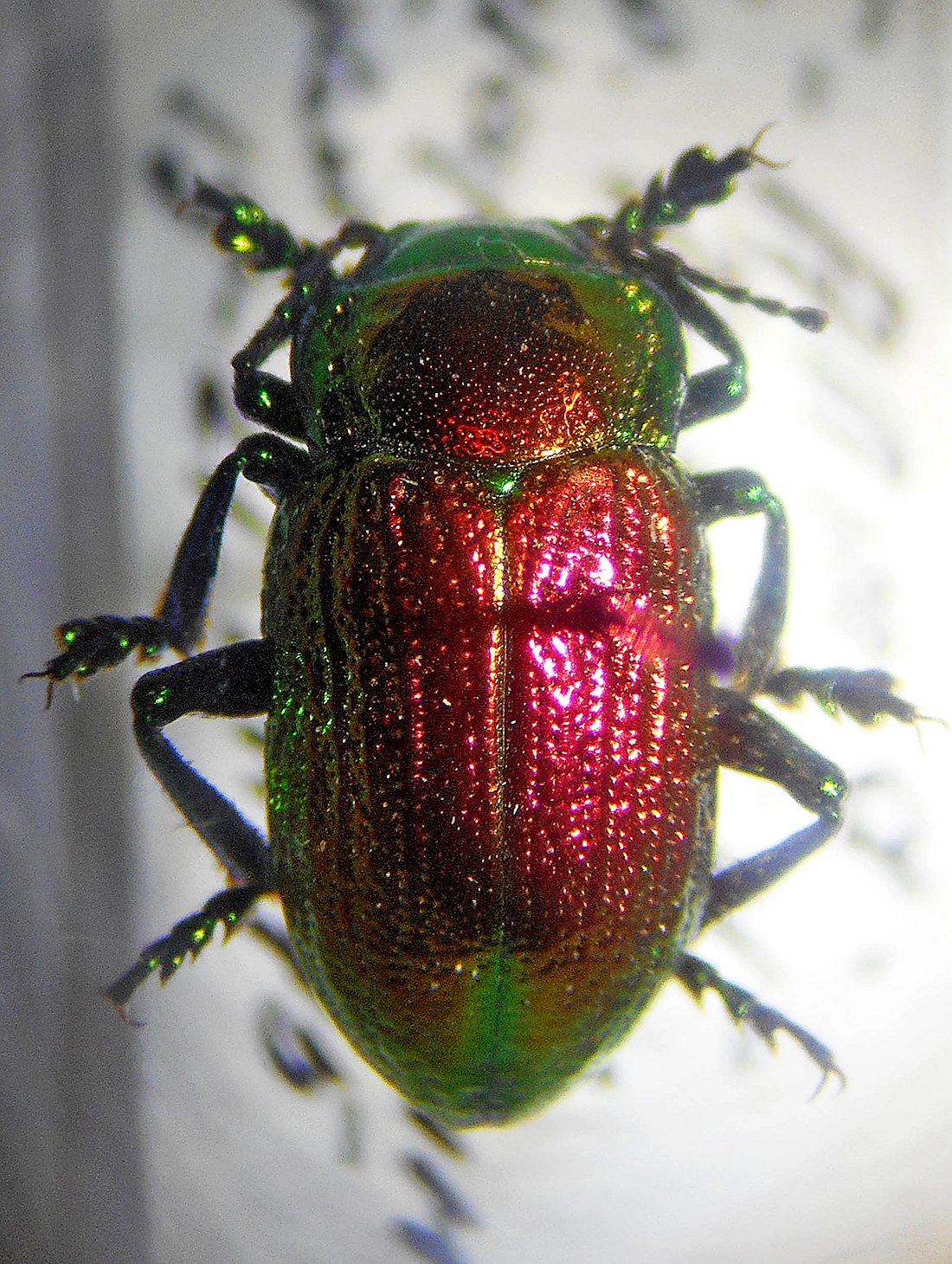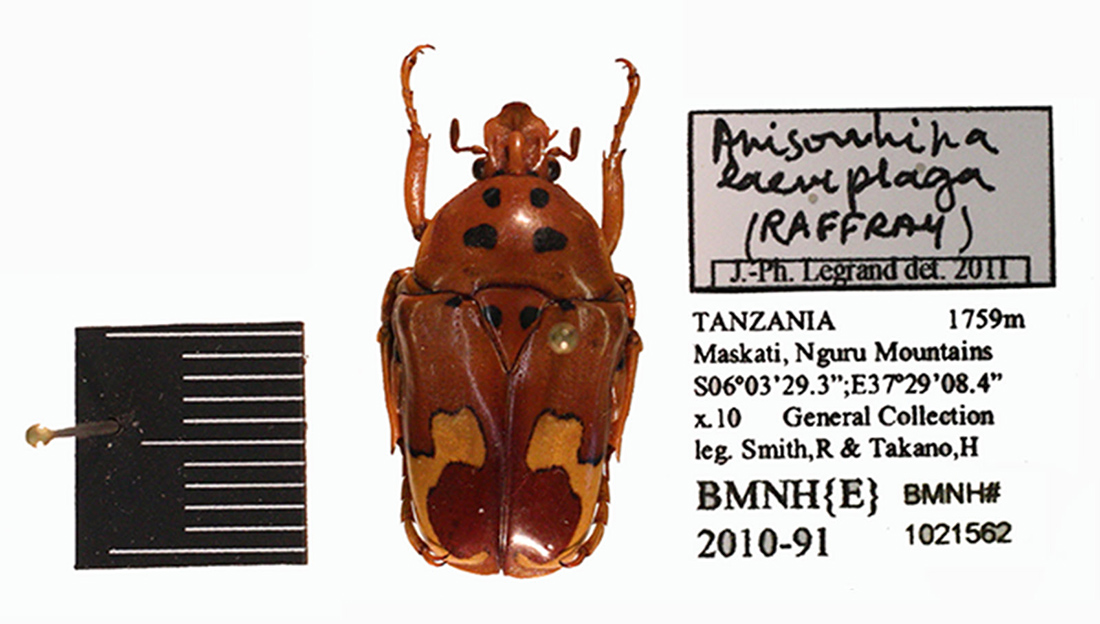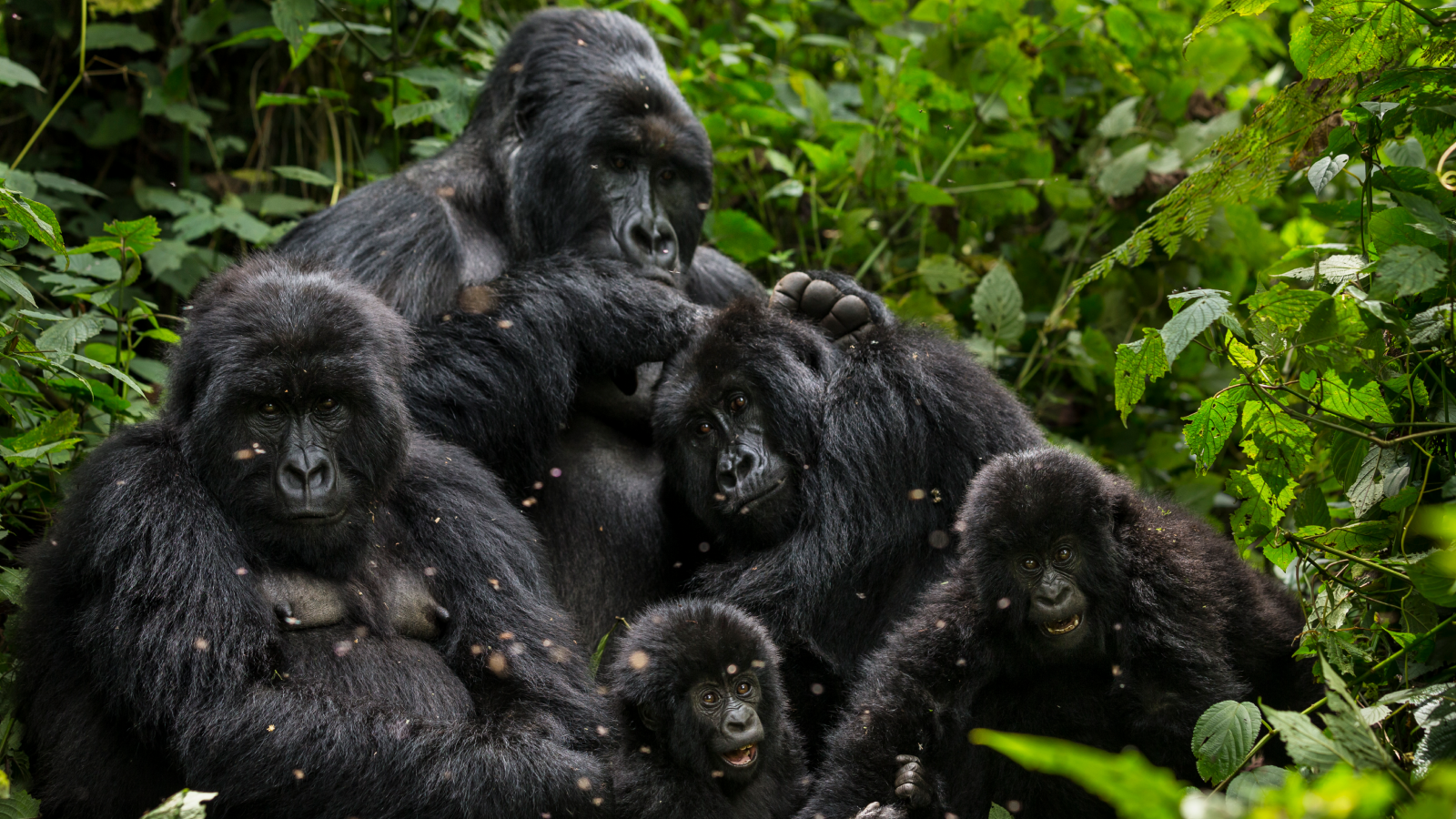Meet the Beetles: Stunning Museum Specimens from London
Beetle-mania

In the Natural History Museum in London, approximately 10 million specimens make up their collection of Coleoptera — the taxonomic order that includes all beetle species.
About 2,000 to 3,000 new specimens are added each year, and the collection spans over three centuries, with 195,000 species represented. Many of the individual specimens in the collection date to the 19th century, and were used to describe and name their species.
This unidentified specimen was collected in Tanzania, in Udzungwa Mountains National Park.
Thanatophilus micans

Thanatophilus micans beetles are commonly known as carrion beetles. They were first described by the Danish zoologist Johann Christian Fabricius in 1794.
Crosita clementzae

Crosita clementzae, a species of leaf beetle, is native to the Altai Mountains in Mongolia. This specimen was found in the Takhin-Shara-Nuru mountain range, about five kilometers south of Tsargin. The species was described by Russian entomologist Georgij Georgiewitsch Jacobson, in 1899.
Anisorrhina laeviplaga

A species of scarab beetle, Anisorrhina laeviplaga was described in 1877 by the French entomologist Achille Marie Jacques Raffray. This specimen was collected in the Nguru Mountains.
Dermorhytis fortunei

This specimen of the beetle species Dermorhytis fortunei is a syntype — one of a set of individuals used by scientists to describe and name a new species. The species was described in 1861 by the British entomologist Joseph Sugar Baly.
Get the world’s most fascinating discoveries delivered straight to your inbox.
Erotylidae

Beetles in the Erotylidae family are also known as pleasing fungus beetles, according to the insect-identifying website Bug Guide. The name derives from the Greek word "erotilos," which means "sweetheart" or "darling."
Erotylidae includes approximately 3,500 species in 260 genera, distributed around the world.
This specimen was collected in Morona-Santiago in Ecuador, at an elevation of 3,609 feet (1,100 meters).
Chrysolina coerulans bella

Collected in China, this syntype represents Chrysolina coerulans bella, a species originally called Chrysomela bella. It was described in 1890 by entomologist Martin Jacoby, who also collected this individual in 1909.
Cheirolasia burkei

Cheirolasia burkei belongs to a group known as flower beetles, in the scarab beetle family. The species was described by English entomologist John Obadiah Westwood, in 1843.
This specimen was collected in 2012 in Tanzania, in the Nguru Mountains, but it can also be found in Congo, Mozambique, Namibia, Botswana and Kenya, according to the Catalogue of Life: 2011 Annual Checklist.
Aprophata eximia

Discovered by the English entomologist Edward Newman in 1842, Aprophata eximia lives in the Philippines. This is a type specimen, which means that the species name and description were based upon this individual.
Cheirotonus parryi

Cheirotonus parryi is a type of scarab beetle found in Vietnam, Laos, Thailand, Myanmar and India. Beetles in this genus are also called long-arm beetles, because of their oversized front limbs.
Docemina crassipes

Charles Darwin collected this syntype male specimen of Docemina crassipes in Tierra del Fuego, an archipelago at the southernmost tip of South America, during his voyage onboard the H.M.S. Beagle (1832 to 1836). The species was described in 1918 by the English entomologist George Charles Champion, in the journal Annals and Magazine of Natural History.

Mindy Weisberger is a science journalist and author of "Rise of the Zombie Bugs: The Surprising Science of Parasitic Mind-Control" (Hopkins Press). She formerly edited for Scholastic and was a channel editor and senior writer for Live Science. She has reported on general science, covering climate change, paleontology, biology and space. Mindy studied film at Columbia University; prior to LS, she produced, wrote and directed media for the American Museum of Natural History in NYC. Her videos about dinosaurs, astrophysics, biodiversity and evolution appear in museums and science centers worldwide, earning awards such as the CINE Golden Eagle and the Communicator Award of Excellence. Her writing has also appeared in Scientific American, The Washington Post, How It Works Magazine and CNN.


